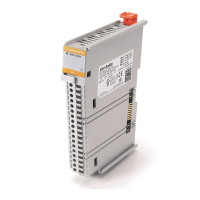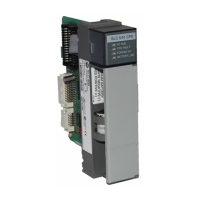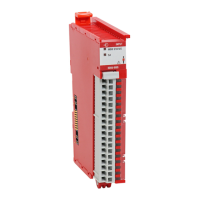Rockwell Automation Publication 5000-UM005B-EN-P - November 2015 71
Current/Voltage/Temperature-sensing Analog Input Module Features (5069-IY4) Chapter 4
Cold Junction Compensation
When using the 5069-IY4 module with a thermocouple input type, the channel
must account for the thermoelectric effect of a junction of the thermocouple field
wires and the RTB terminals.
The junction at which temperature is measured is the hot junction. The junction
where the thermocouple wire interfaces with copper are the cold junction. The
transition from thermocouple wire to copper typically happens at the RTB
terminal.
The thermoelectric effect alters the input signal and must be compensated for to
measure temperatures accurately. To compensate the input signal from your
module accurately, you must use cold junction compensation to account for the
increased voltage.
Cold Junction Disable Option
You can disable cold junction compensation on your 5069-IY4 module. To see
where to disable cold junction compensation, see
page 98.
Fault and Status Reporting
The 5069-IY4 module sends fault and status data with channel data to the
owner-controller and listening controllers. The data is returned via module tags
that you can monitor in your Logix Designer application.
With some exceptions, the 5069-IY4 module provides the fault and data status in
a channel-centric format. The tag names in the following table that include Chxx
represent channel-centric data. The xx represents channel number.
IMPORTANT
You must use a cold junction compensation (CJC) RTB when a 5069-IY4 module
uses a thermocouple input type. The CJC RTBs account for the thermoelectric
effect.
The following CJC RTBs are available for order:
• 5069-RTB14CJC-SPRING
• 5069-RTB14CJC-SCREW

